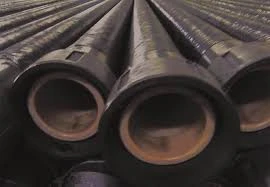
-
 Afrikaans
Afrikaans -
 Albanian
Albanian -
 Amharic
Amharic -
 Arabic
Arabic -
 Armenian
Armenian -
 Azerbaijani
Azerbaijani -
 Basque
Basque -
 Belarusian
Belarusian -
 Bengali
Bengali -
 Bosnian
Bosnian -
 Bulgarian
Bulgarian -
 Catalan
Catalan -
 Cebuano
Cebuano -
 China
China -
 China (Taiwan)
China (Taiwan) -
 Corsican
Corsican -
 Croatian
Croatian -
 Czech
Czech -
 Danish
Danish -
 Dutch
Dutch -
 English
English -
 Esperanto
Esperanto -
 Estonian
Estonian -
 Finnish
Finnish -
 French
French -
 Frisian
Frisian -
 Galician
Galician -
 Georgian
Georgian -
 German
German -
 Greek
Greek -
 Gujarati
Gujarati -
 Haitian Creole
Haitian Creole -
 hausa
hausa -
 hawaiian
hawaiian -
 Hebrew
Hebrew -
 Hindi
Hindi -
 Miao
Miao -
 Hungarian
Hungarian -
 Icelandic
Icelandic -
 igbo
igbo -
 Indonesian
Indonesian -
 irish
irish -
 Italian
Italian -
 Japanese
Japanese -
 Javanese
Javanese -
 Kannada
Kannada -
 kazakh
kazakh -
 Khmer
Khmer -
 Rwandese
Rwandese -
 Korean
Korean -
 Kurdish
Kurdish -
 Kyrgyz
Kyrgyz -
 Lao
Lao -
 Latin
Latin -
 Latvian
Latvian -
 Lithuanian
Lithuanian -
 Luxembourgish
Luxembourgish -
 Macedonian
Macedonian -
 Malgashi
Malgashi -
 Malay
Malay -
 Malayalam
Malayalam -
 Maltese
Maltese -
 Maori
Maori -
 Marathi
Marathi -
 Mongolian
Mongolian -
 Myanmar
Myanmar -
 Nepali
Nepali -
 Norwegian
Norwegian -
 Norwegian
Norwegian -
 Occitan
Occitan -
 Pashto
Pashto -
 Persian
Persian -
 Polish
Polish -
 Portuguese
Portuguese -
 Punjabi
Punjabi -
 Romanian
Romanian -
 Russian
Russian -
 Samoan
Samoan -
 Scottish Gaelic
Scottish Gaelic -
 Serbian
Serbian -
 Sesotho
Sesotho -
 Shona
Shona -
 Sindhi
Sindhi -
 Sinhala
Sinhala -
 Slovak
Slovak -
 Slovenian
Slovenian -
 Somali
Somali -
 Spanish
Spanish -
 Sundanese
Sundanese -
 Swahili
Swahili -
 Swedish
Swedish -
 Tagalog
Tagalog -
 Tajik
Tajik -
 Tamil
Tamil -
 Tatar
Tatar -
 Telugu
Telugu -
 Thai
Thai -
 Turkish
Turkish -
 Turkmen
Turkmen -
 Ukrainian
Ukrainian -
 Urdu
Urdu -
 Uighur
Uighur -
 Uzbek
Uzbek -
 Vietnamese
Vietnamese -
 Welsh
Welsh -
 Bantu
Bantu -
 Yiddish
Yiddish -
 Yoruba
Yoruba -
 Zulu
Zulu
Exploring Limestone Formations Through Targeted Drilling Techniques for Resource Assessment
Exploration by Drilling into Limestone Formations
Limestone formations are significant geological structures that often serve as reservoirs for various natural resources, including fossil fuels, water, and minerals. Drilling into these formations for exploration purposes is a crucial practice in geology, mining, and environmental studies. Understanding the processes, challenges, and potential outcomes of drilling into limestone provides valuable insights into resource management and geological safety.
Limestone, primarily composed of calcium carbonate, is formed through the accumulation of organic materials and the precipitation of calcium in sedimentary environments. The unique properties of limestone, such as its porosity and permeability, make it an attractive target for exploration. These properties allow for the storage and movement of fluids, which is essential for the exploration of oil and gas reserves, groundwater, and even geothermal energy sources.
The exploration process generally begins with a comprehensive geological survey that includes geological mapping, geophysical studies, and geochemical analyses
. These studies help identify the most promising areas for drilling and establish the depth and density of limestone formations. Advanced techniques such as seismic reflection and magnetic resonance imaging are often employed to create detailed subsurface profiles, allowing geologists to predict the location of potential reservoirs accurately.Once potential drilling sites are identified, the drilling process starts. Depending on the goals of the exploration, various drilling techniques can be employed, including rotary drilling and core drilling. Rotary drilling involves the continuous rotation of a drill bit that cuts through the limestone, while core drilling retrieves cylindrical samples from the rock, allowing scientists to assess the mineral composition and structure of the formation directly. This information is vital for understanding the feasibility of extracting resources from the limestone.
drilling into limestone formations for exploration and ...

However, drilling into limestone formations is not without challenges. One of the primary concerns is the potential for environmental impacts. Limestone aquifers are often critical water sources for local communities, and any contamination from drilling could have severe consequences. Additionally, the process of drilling can create disturbances that may lead to erosion or landslides, particularly in karst landscapes where sinkholes and subsurface voids are prevalent.
To mitigate these risks, environmental regulations are often put in place, requiring comprehensive impact assessments before drilling commences. These assessments evaluate potential environmental impacts and provide measures to minimize negative effects. Moreover, advancements in drilling technology have contributed to safer practices, including better containment systems for fluids and improved monitoring techniques to detect any leaks or disturbances in real-time.
The outcomes of successful drilling into limestone formations can be significant. Discoveries of oil, gas, or mineral deposits can lead to economic benefits through job creation and resource extraction. In contrast, the revelation of clean water aquifers can inform conservation efforts and sustainable management of these critical resources. Moreover, as renewable energy initiatives expand, limestone formations are being examined for geothermal energy potential, providing new avenues for sustainable energy development.
In conclusion, drilling into limestone formations is a complex and multifaceted endeavor that requires careful planning and consideration of environmental impacts. With the right techniques and regulations in place, exploration can yield valuable resources while ensuring the preservation of ecological systems. As our need for natural resources continues to grow, the importance of responsible drilling practices will only increase in relevance and urgency.









